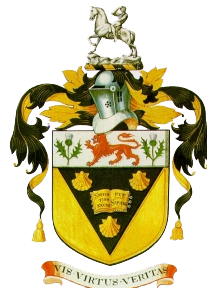
Jonathan Paul Clegg, was a South African musician, singer-songwriter, dancer, anthropologist and anti-apartheid activist.

The Eastern Cape is one of the nine provinces of South Africa. Its capital is Bhisho, but its two largest cities are East London and Gqeberha. Due to its climate and nineteenth century towns, it is a common location for tourists. It is also known for being home to many anti-apartheid activists, the most famous being Nelson Mandela hailing from the province.

Rhodes University is a public research university located in Makhanda (Grahamstown) in the Eastern Cape Province of South Africa. It is one of four universities in the province. Established in 1904, Rhodes University is the province's oldest university, and it is the sixth oldest South African university in continuous operation, being preceded by the University of the Free State (1904), University of Witwatersrand (1896), University of South Africa (1873) as the University of the Cape of Good Hope, Stellenbosch University (1866) and the University of Cape Town (1829). Rhodes was founded in 1904 as Rhodes University College, named after Cecil Rhodes, through a grant from the Rhodes Trust. It became a constituent college of the University of South Africa in 1918 before becoming an independent university in 1951.
Brandfort, officially renamed Winnie Mandela in 2021, is a small agricultural town in the central Free State province of South Africa, about 60 km northeast of Bloemfontein on the R30 road. The town serves the surrounding farms for supplies and amenities. It is well known for once being home to the anti-apartheid stalwart and wife of Nelson Mandela, Winnie Mandela, during her banishment.

Albany, South Africa was a district in the Eastern Cape, South Africa. Grahamstown was traditionally the administrative capital, cultural centre and largest town of the Albany district.

Makhanda, also known as Grahamstown, is a town of about 140,000 people in the Eastern Cape province of South Africa. It is situated about 110 kilometres (70 mi) northeast of Gqeberha and 130 kilometres (80 mi) southwest of East London. It is the largest town in the Makana Local Municipality, and the seat of the municipal council. It also hosts Rhodes University, the Eastern Cape Division of the High Court, the South African Library for the Blind (SALB), a diocese of the Anglican Church of Southern Africa, and 6 South African Infantry Battalion. Furthermore, located approximately 3 km south-east of the town lies the world renowned Waterloo Farm, the only estuarine fossil site in the world from 360 million years ago with exceptional soft-tissue preservation.

Gqeberha, previously named Port Elizabeth, and colloquially referred to as P.E., is a major seaport and the most populous city in the Eastern Cape province of South Africa. It is the seat of the Nelson Mandela Bay Metropolitan Municipality, South Africa's second-smallest metropolitan municipality by area. It is the sixth-most populous city in South Africa and is the cultural, economic and financial hub of the Eastern Cape.

The 1820 Settlers were several groups of British colonists from England, Ireland, Scotland, and Wales, settled by the government of the United Kingdom and the Cape Colony authorities in the Eastern Cape of South Africa in 1820.
Bongani Ndodana-Breen, is a South African-born composer, musician, academic and cultural activist. He is a member of the Xhosa clan. He was educated at St. Andrew's College and Rhodes University in Grahamstown and also studied composition in Stellenbosch under Roelof Temmingh. In 1998 Ndodana-Breen was the first Black classical composer to be awarded the prestigious Standard Bank Young Artist Award for Music, by the National Arts Festival and sponsored by Standard Bank of South Africa. He was one of Mail & Guardian 200 Young South Africans and was profiled on CNN African Voices for his work Harmonia Ubuntu commissioned for the centenary of Nelson Mandela and based on his writings and speeches. He is a fellow at the Radcliffe Institute at Harvard University for the 2019/2020 academic year.
Troy Blacklaws is a writer and teacher from South Africa. He was born on 9 September 1965 in Pinetown, Natal Province. After his schooling at Paarl Boys' High School he studied at Rhodes University before being conscripted in to the South African Defence Force. After serving in the army Blacklaws began teaching English. He is currently teaching at the International School of Luxembourg.
Ashraf Johaardien is a multi-award-winning playwright, actor, and producer. He was the recipient of the inaugural PANSA Jury Award (2002), was listed as one of Mail & Guardian's 'Top 200 Young South Africans' (2008) and he received a Legends Award (2012) for his achievements in arts and culture.

Makhanda, also spelled Makana and also known as Nxele, was a Xhosa indigenous doctor. He served as a top advisor to Chief Ndlambe. During the Xhosa Wars, on the 22nd of April, 1819, he initiated an abortive assault on the town of Grahamstown, in what was then the Cape Colony.
The Makana Botanical Gardens is a botanical garden in South Africa operated by Rhodes University, located in Grahamstown.
Christopher Michael "Zithulele" Mann was a South African poet.

Mike Berning was a South-African Librarian, author, and bell ringer. He is best known as a Head of Cory Library (1965) and Deputy University Librarian.
Jacob Glen Cuyler was an American of Dutch origin who was an important character in the settlement of the British 1820 Settlers to the Eastern Cape, South Africa.
Ivan Mitford-Barberton (1896–1976) was a South African sculptor, writer and authority on heraldry.
The statue of Nelson Mandela is a large bronze sculpture of the former President of South Africa and anti-apartheid activist Nelson Mandela, located in Nelson Mandela Square in Sandton, Gauteng.
Sidbury is a village in the Albany district of the Eastern Cape province of South Africa.
The Donkin Heritage Trail is a 5 km self-guided walking trail along the old hill of central Port Elizabeth, Eastern Cape, South Africa. The Donkin Heritage Trail is named after the acting Governor of the Cape Colony, Rufane Shaw Donkin.










